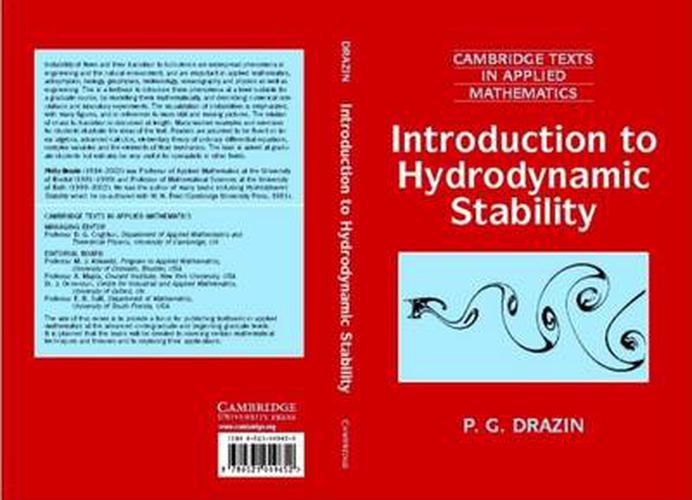Readings Newsletter
Become a Readings Member to make your shopping experience even easier.
Sign in or sign up for free!
You’re not far away from qualifying for FREE standard shipping within Australia
You’ve qualified for FREE standard shipping within Australia
The cart is loading…






Instability of flows and their transition to turbulence are widespread phenomena in engineering and the natural environment, and are important in applied mathematics, astrophysics, biology, geophysics, meteorology, oceanography and physics as well as engineering. This is a textbook to introduce these phenomena at a level suitable for a graduate course, by modelling them mathematically, and describing numerical simulations and laboratory experiments. The visualization of instabilities is emphasized, with many figures, and in references to more still and moving pictures. The relation of chaos to transition is discussed at length. Many worked examples and exercises for students illustrate the ideas of the text. Readers are assumed to be fluent in linear algebra, advanced calculus, elementary theory of ordinary differential equations, complex variables and the elements of fluid mechanics. The book is aimed at graduate students but will also be very useful for specialists in other fields.
$9.00 standard shipping within Australia
FREE standard shipping within Australia for orders over $100.00
Express & International shipping calculated at checkout
Instability of flows and their transition to turbulence are widespread phenomena in engineering and the natural environment, and are important in applied mathematics, astrophysics, biology, geophysics, meteorology, oceanography and physics as well as engineering. This is a textbook to introduce these phenomena at a level suitable for a graduate course, by modelling them mathematically, and describing numerical simulations and laboratory experiments. The visualization of instabilities is emphasized, with many figures, and in references to more still and moving pictures. The relation of chaos to transition is discussed at length. Many worked examples and exercises for students illustrate the ideas of the text. Readers are assumed to be fluent in linear algebra, advanced calculus, elementary theory of ordinary differential equations, complex variables and the elements of fluid mechanics. The book is aimed at graduate students but will also be very useful for specialists in other fields.